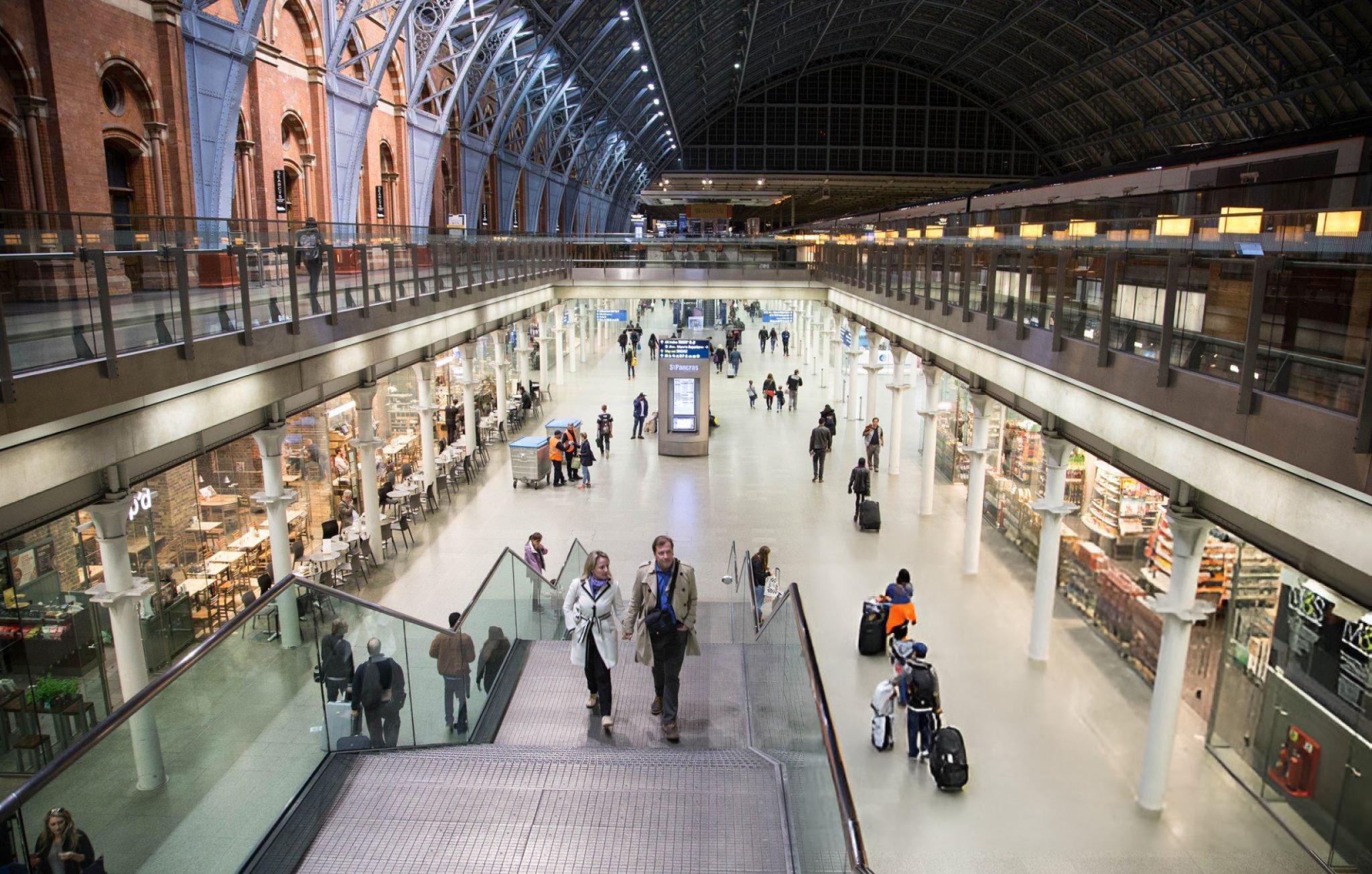St Pancras hopes redesign of international departures area could help bring direct trains to new European locations
St Pancras International could soon offer new direct train routes to Germany, Italy, and Switzerland under ambitious expansion plans aimed at tripling the number of international passengers passing through the station.
Under the proposed redesign, the international departure area could be expanded to accommodate up to 5,000 passengers an hour. London St Pancras Highspeed, the company responsible for the station, hopes this modernisation will attract new railway operators to compete with Eurostar, according to The Times.
Currently, Eurostar is the sole operator of high-speed rail services between the UK and mainland Europe, with direct routes limited to Paris, Lille, Brussels, Rotterdam, and Amsterdam. However, new operators could soon introduce direct services to Frankfurt, Cologne, Geneva, Zurich, and even Milan.
New operators and expansion plans
To facilitate these new routes, London St Pancras Highspeed has entered into an agreement with Getlink, the French company that operates the Channel Tunnel, to improve international rail connectivity between the UK and Europe.
Sir Richard Branson’s Virgin Group and Evolyn, a new company established by investors in National Express, are among the potential operators said to be interested in launching international services.
The Channel Tunnel itself has spare capacity for additional rail services, but St Pancras’ current infrastructure is a limiting factor. The existing departure area is already constrained and prone to long queues, making an upgrade essential before new routes can be introduced.
Yann Leriche, the chief executive of Getlink, expressed enthusiasm for the plans, stating:
“We are keen to drive forward attractive opportunities for low-carbon [travel] with a range of new destinations in Germany, Switzerland and France. This partnership with London St Pancras Highspeed is essential for accelerating this momentum.”
A future of seamless rail travel across Europe
Robert Sinclair, chief executive of London St Pancras Highspeed, emphasised the importance of expanding the station’s capacity to accommodate growing demand for international train travel.
“Joining forces with Eurotunnel is another exciting step on our journey to realise a future where high-speed rail is the preferred option for travelling to Europe. As we see demand for international rail travel grow, we have an important role to play as key infrastructure managers to actively work together to encourage new and existing train operators to expand capacity and launch new destinations, unlocking the potential of a fully connected Europe.”
The proposed expansion aligns with a broader European trend of increasing investment in high-speed rail as a sustainable alternative to air travel. European governments and railway companies are actively working to improve cross-border rail links, with France and Germany recently announcing plans to expand their own high-speed networks.
Challenges and opportunities
While the expansion plan has been met with optimism, challenges remain. Introducing competition to Eurostar’s monopoly on cross-Channel services would require regulatory approval, financial backing, and infrastructure adjustments. Additionally, Brexit has introduced complexities around border controls, meaning that any increase in passenger numbers would require adjustments to passport and security procedures at St Pancras.
Nevertheless, the expansion of international rail services could offer significant benefits, including:
- Greater connectivity – More direct routes to European cities, reducing reliance on flights.
- Sustainable travel – High-speed rail is a lower-carbon alternative to short-haul flights.
- Economic growth – Improved rail links could boost tourism and business ties between the UK and Europe.
Looking ahead
If the expansion plans move forward as expected, Londoners and UK travellers could soon enjoy more seamless, eco-friendly connections to major European cities. With new operators potentially entering the market, competition could also drive down ticket prices, making international rail travel a more attractive option for both business and leisure passengers.
A final decision on the station’s redevelopment is expected in the coming months, with further announcements on potential operators and routes anticipated later this year.







